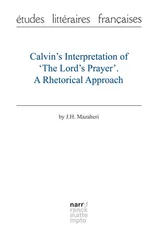sív', elided form of * síve, conjunction or preposition: as , apparently when comparing with something close to the speaker (contrast tambebelow [27] VT43 confirms that the full form of the word is síve .
). The first element is sí- this , here, now as in síraabove. This is prefixed to what is evidently the preposition ve as , like , persisting through all stages of Tolkien’s development of Quenya (QL:101, Namárië, MC:215). The Sindarin word # bewhich occurs in the King’s Letter (SD:129, there with a suffixed article: ben) is apparently a cognate of Quenya ve. While translated in the in the phrase ben genediad Drannail= in the Shire reckoning (calendar), the context makes it clear that in the here means * according to the . Sindarin # bewould be similar to the primitive form of this preposition; in Quenya the primitive form with binstead of vmay be preserved in the word tambe, see below.
tambe, preposition: as , in the same way as , apparently pointing away from the speaker (contrast * síveabove). This may be tana that (LR:389 s.v. ta-) prefixed to * be as , like (see above), contracted to * tan-beand then assimilated to tambe. Yet if this explanation is correct one may ask why sív[ e] above does not appear as ** simbeinstead, contracted in the same way from * sina-be( sina this , UT:305). It would seem that Quenya word formation is not entirely symmetric; in the case of sív[ e] a prefix based directly on the stem si- is used, while in the case of tambethe first element might seem to be based on the derived form tanarather than the naked root ta-. Perhaps ** táveparalleling sív[ e] would be equally possible? Such a speculative form cannot be recommended to writers, though. It may be noted that in one quite early "Qenya" text reproduced in MC:215-216, the word for that appears as tanyarather than tana( tanya wende that maiden ). Tanyais best analysed as a root *tan- plus the ending - ya. If Tolkien (at least sometimes) imagined the demonstrative stem to be *tan- rather than just ta-, this might explain the form tambe(< * tan-be). Interestingly, the verb tana- to show, indicate and the noun tanna sign , both from a source postdating the Etymologies and indeed the LotR itself (MR:385), could very well reflect a demonstrative stem *tan-. (It may be noted that Christopher Tolkien in MR:385 refers to tana- as a root .)
tien, evidently dative pronoun to them , for them . From the Cormallen Praise we know the word te them . This may represent unstressed * tai those (ones) , a primitive plural pronoun formed (with the primitive plural ending - î, - i)from the demonstrative stem ta- that ; cf. Quenya ta that , it (LR:389). The connecting vowel emay well turn up before the dative ending - nwhen it is added to a monosyllable ending in a diphthong, producing a form * taien. Before another vowel, aiwas reduced to ein Quenya, cf. for instance Q leo shade from primitive daio(LR:354 s.v. day-). Hence * taiencould become * teen, but the sequence of two concomitant e's was not durable, becoming ieby dissimilation. Hence the dative form of tecan plausibly be tien. (For the development ee> ie, cf. for instance lauriëas the plural form of laurëa golden in Namárië: It has long been recognized that the plural form represents * laurëai, unstressed final - ailater becoming - e, but what would be * laurëeturned into lauriëby dissimilation.)
tuluva, future verb will come . The verb tul- come is well attested; in the Etymologies it is listed in the first person aorist ( tulin I come ), derived directly from a stem tul- come , approach , move towards (point of speaker) (LR:395, cf. WJ:368). The verb here occurs with the future-tense ending - uva, as in firuvamme(q.v.) The future tense tuluvawas already attested in the Silmarillion , there with the prefix en- re- , again , Húrin crying aurë entuluva, day shall come again , after the Nirnaeth Arnoediad ( Silmarillion Ch. 20).
tulya, verb lead , or literally evidently * cause to come . This must be seen as a causative form of the verb tul- come (see tuluvaabove). The Etymologies also lists a primitive causative formation, tultâ- make come , whence Quenya tulta- send for , fetch , summon : LR:395 s.v. tul-. This is probably the best example we have of the verbal ending - tâ> - tabeing causative (though sometimes it functions simply as a verb-former). Tulya-, however, shows another ending, and it also has a meaning somewhat different from that of tulta-: the latter only has to do with causing something to come to(wards) oneself, while tulya- evidently means to lead or direct in general, irrespective of the position of the speaker (despite the gloss assigned to the stem tul-, quoted under tuluvaabove). How, then, are we to analyse tulya? The ending - ya(primitive - yâ, or by another spelling - jâ) is sometimes simply a verb-former that adds nothing to the meaning of the stem, an eminent example of this being Quenya sir- vs. Old Noldorin sirya-: Both verbs mean flow , but while the Quenya form represents the stem sir- flow with no added elements, the synonymous Old Noldorin verb is derived by means of the ending - yathat in this case cannot be seen to cause any semantic change whatsoever (LR:385). Yet in other cases this ending may take on a causative meaning. In WJ:411 the stem tele is glossed close , end , come at the end . The most immediate Quenya descendant of this was the intransitive verb tele- finish , end . Yet this had a transitive counterpart telya finish , wind up , conclude . It is not surprising, then, that the same ending can be used to derive a transitive verb tulya lead , make come from the intransitive verbal stem tul- come . The ending - yamay not necessarily connote transitivity, but it is interesting to notice that the verb ulya- pour retains the ending - yain the past tense ulyaneonly if the verb is used in a transitive sense. If "pour" is intransitive, the ending - yadrops out and the past tense is ulle, apparently formed directly from the stem (LR:396 s.v. ulu-).
Читать дальше












